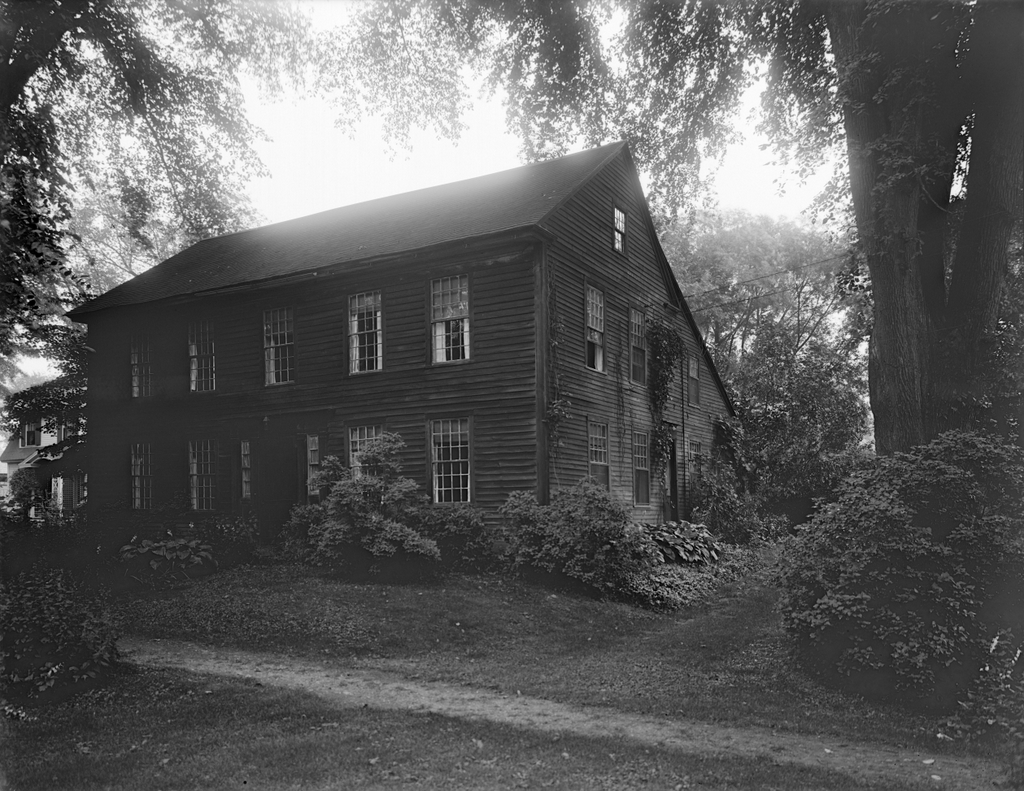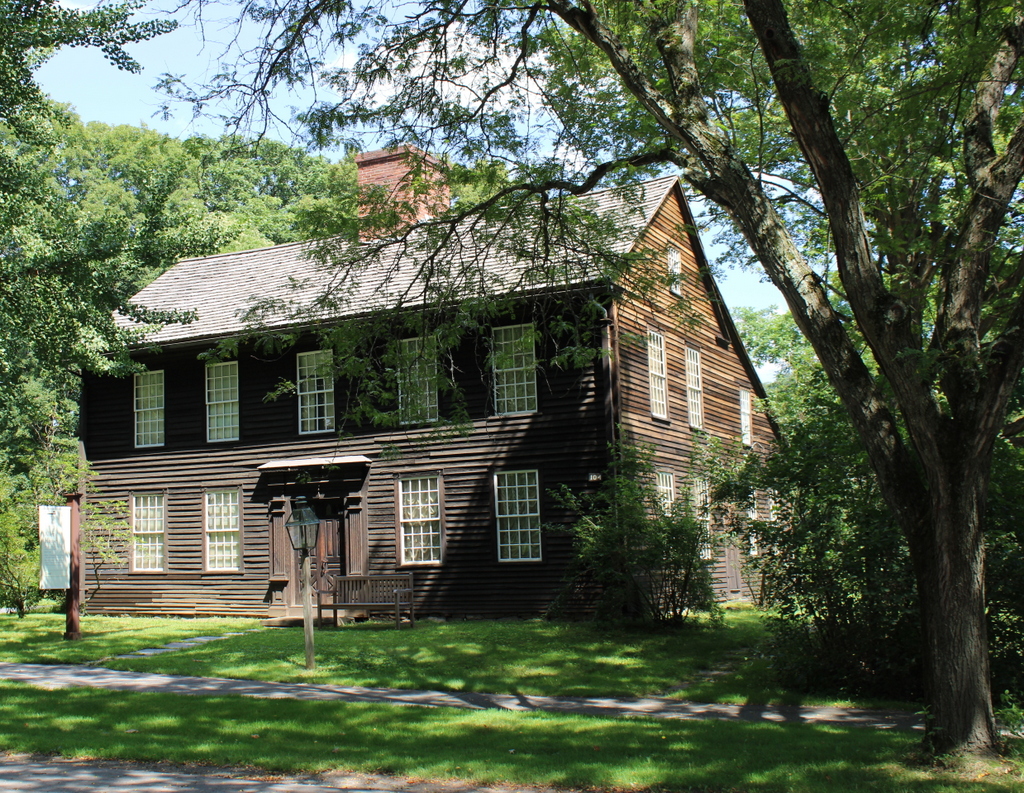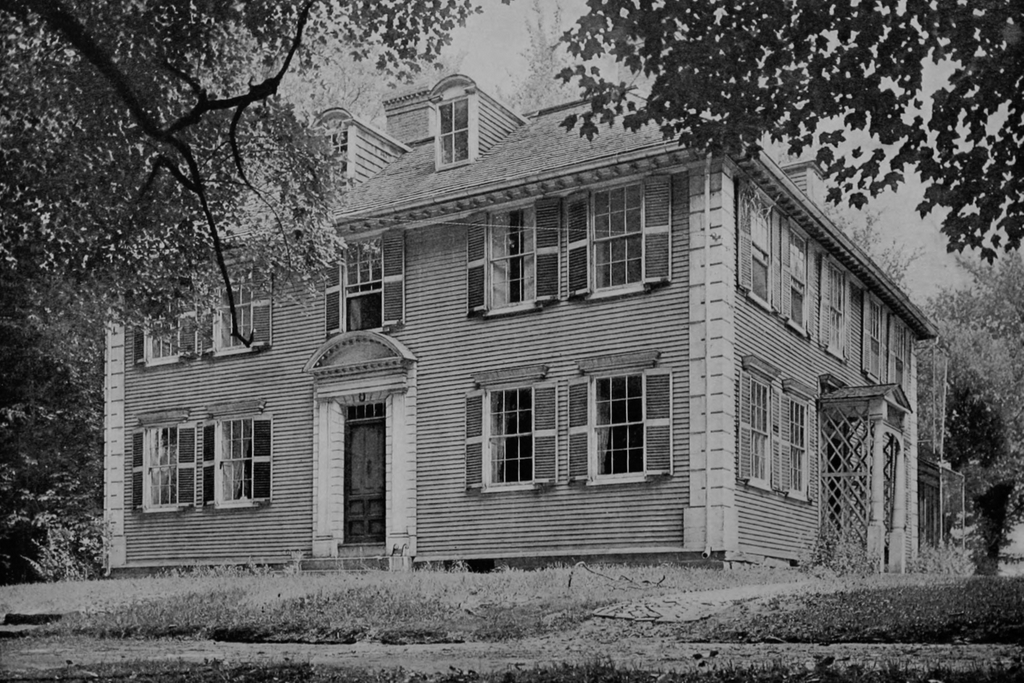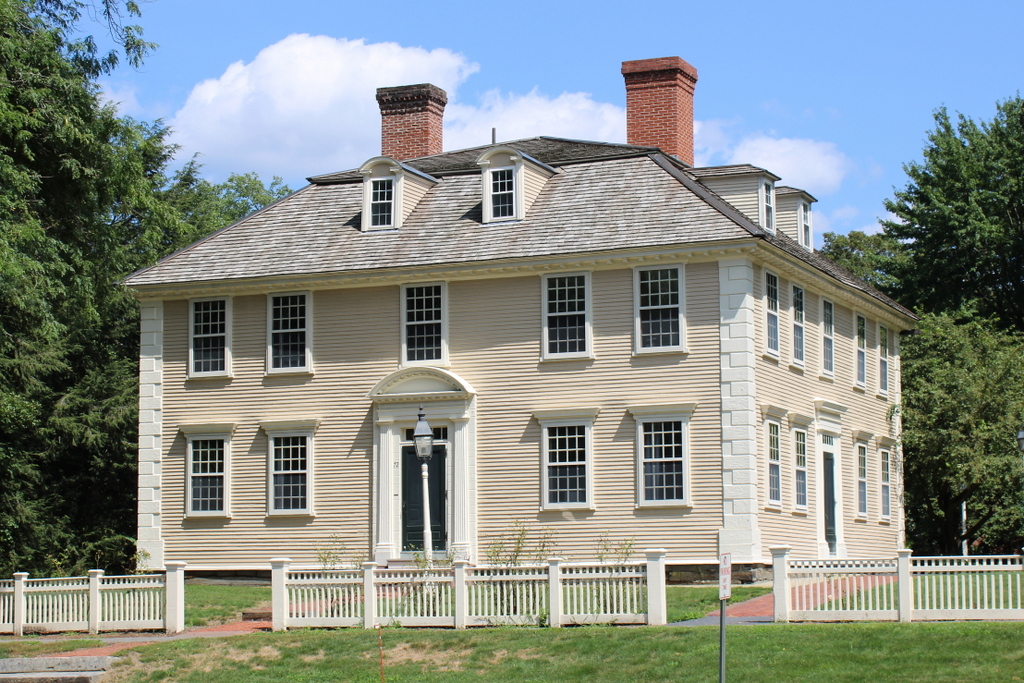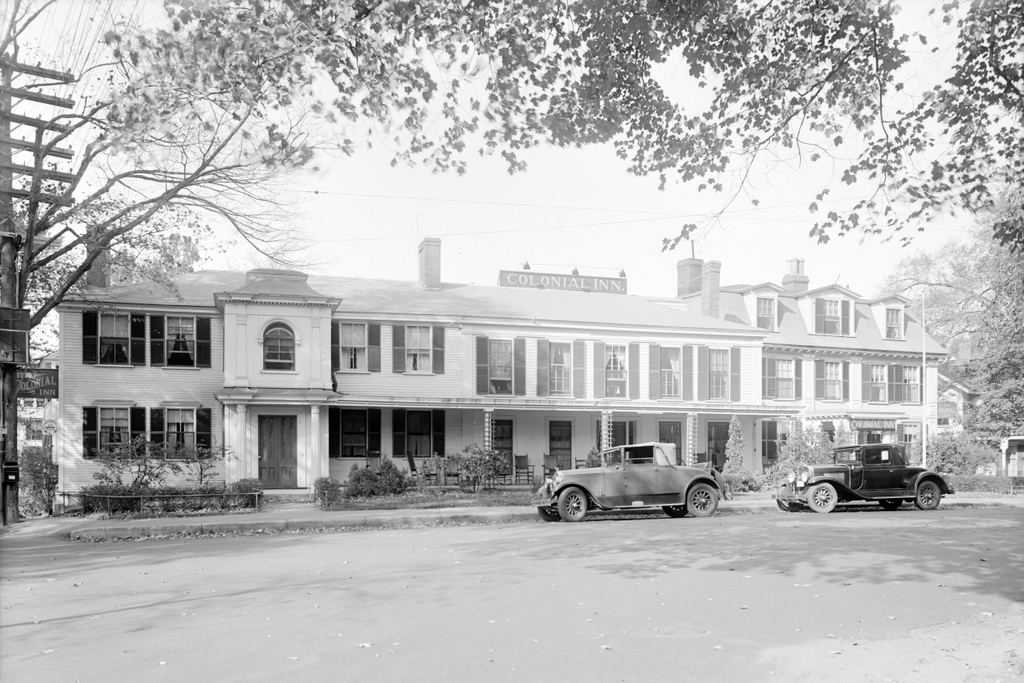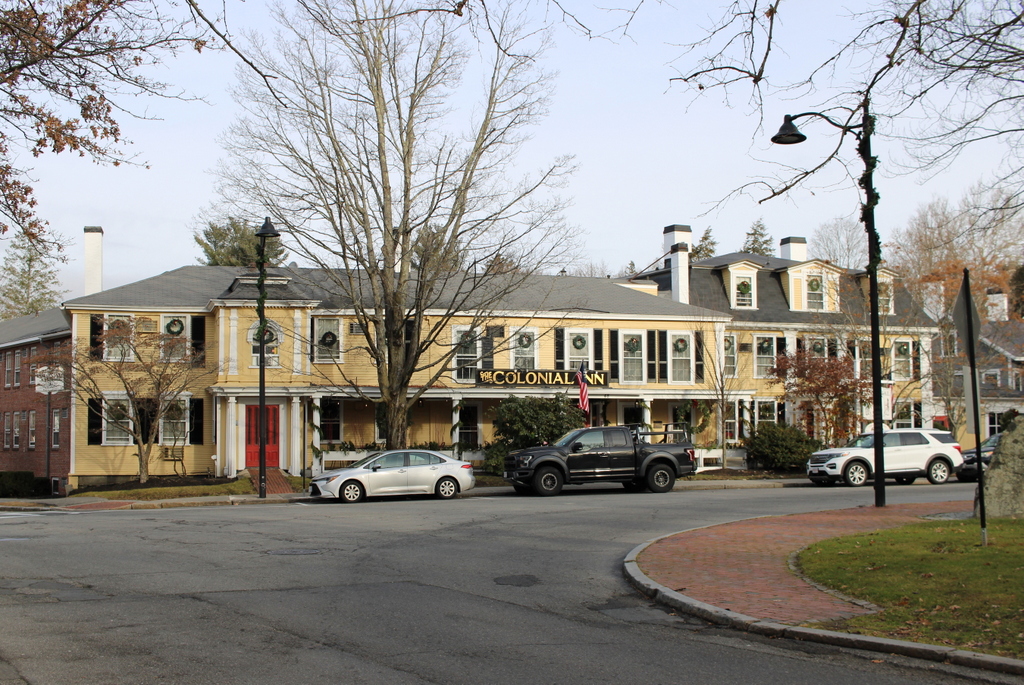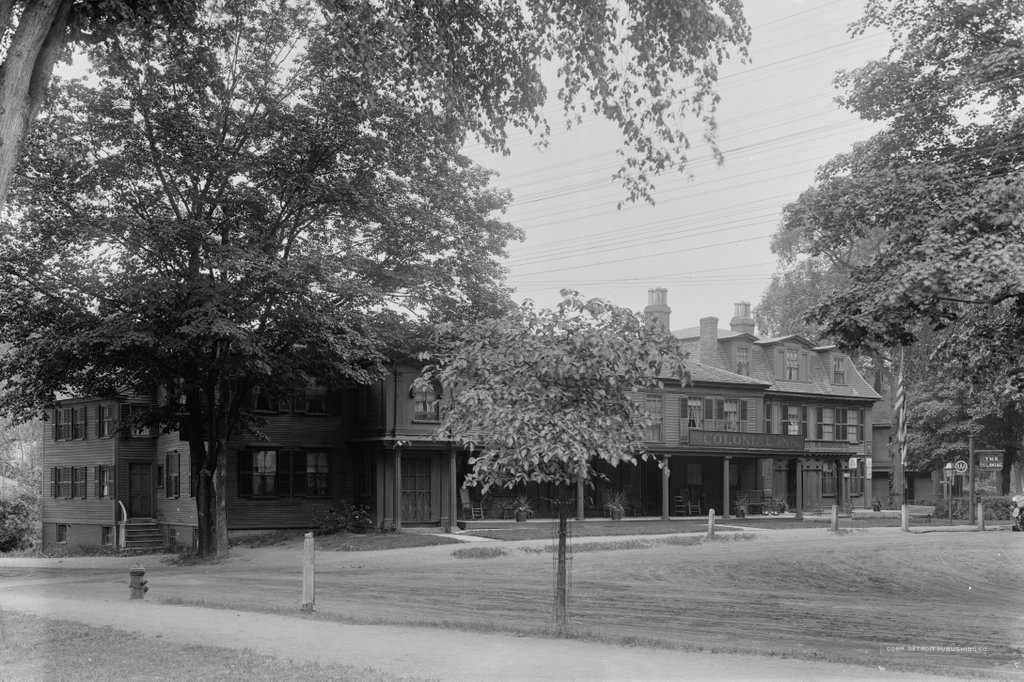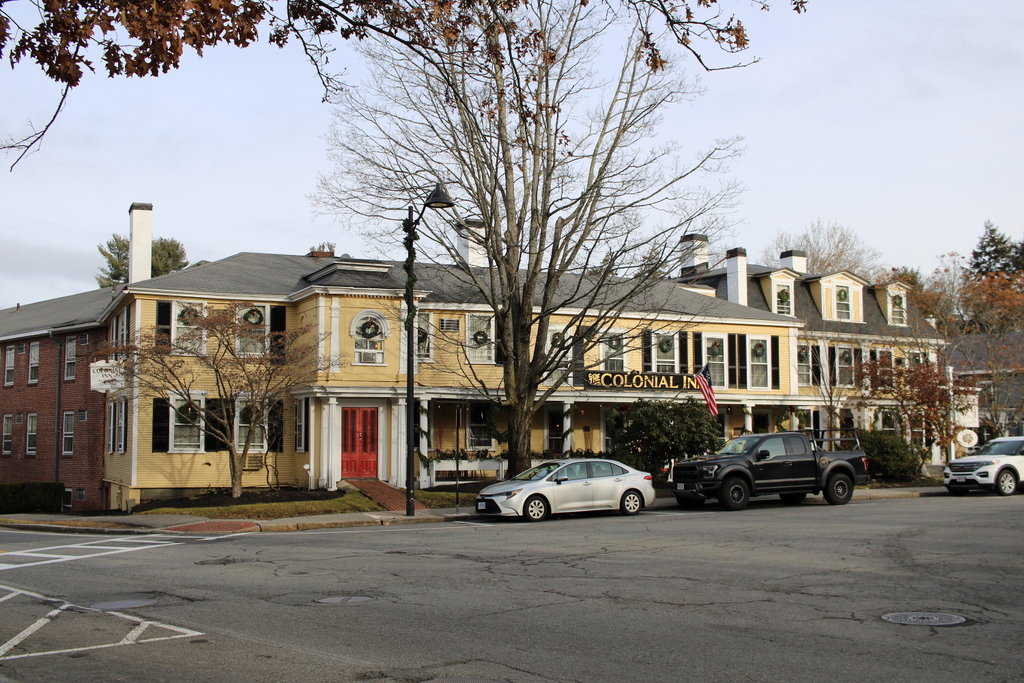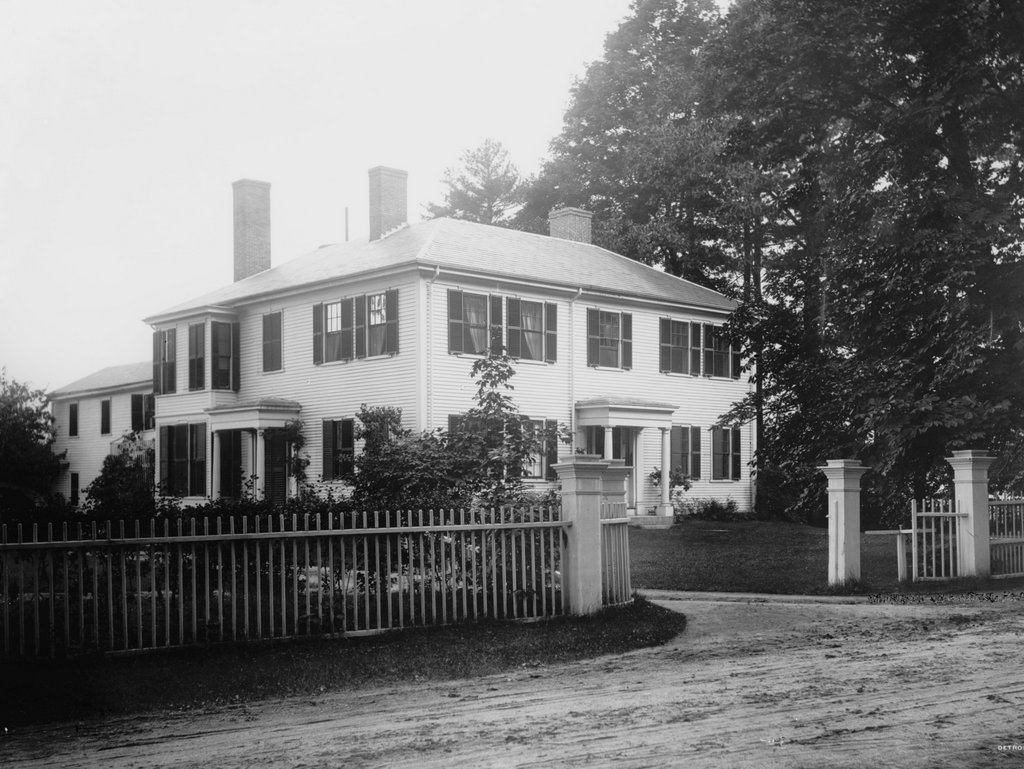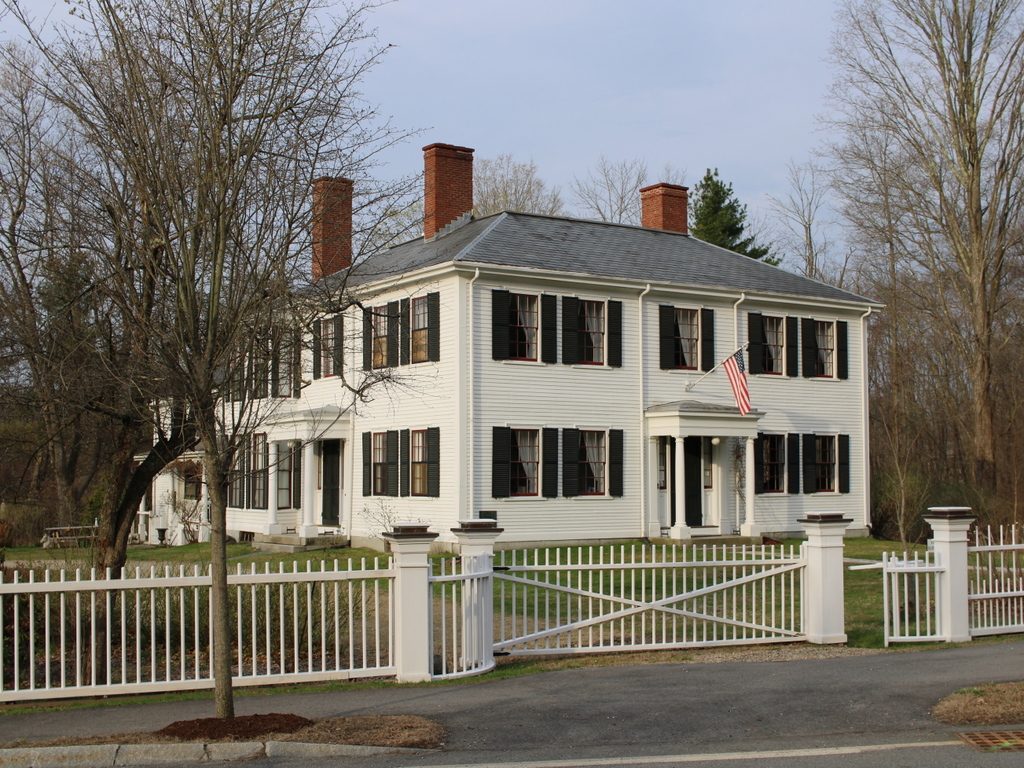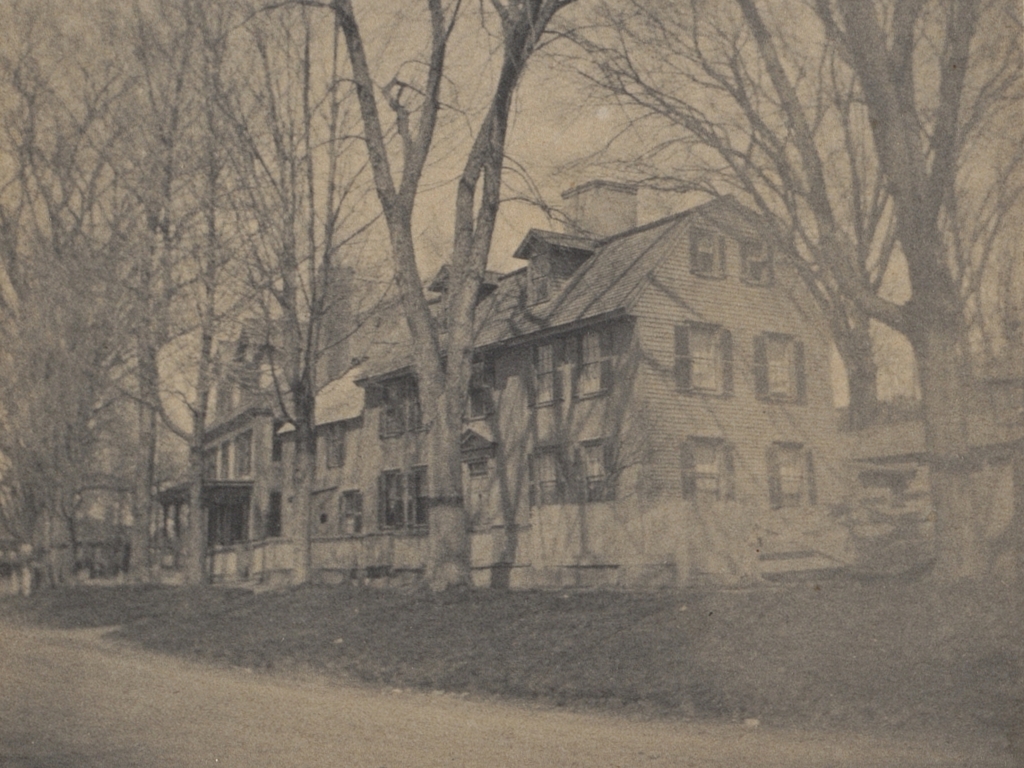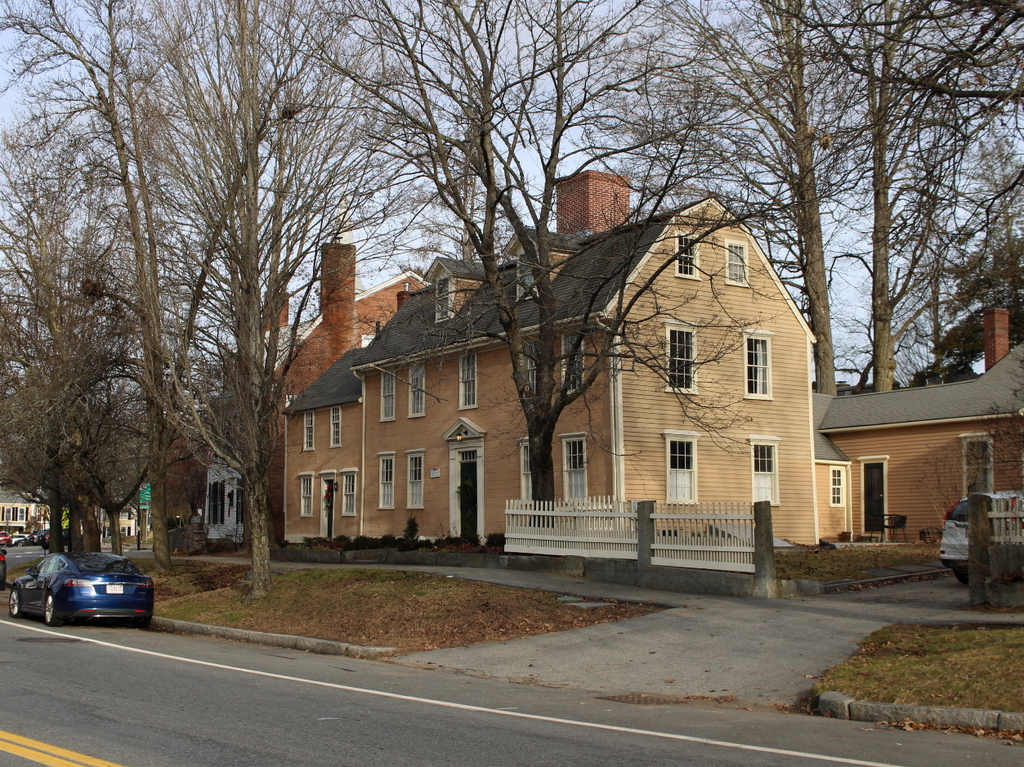The Allen House at 104 Old Main Street in Deerfield, on July 24, 1930. Image courtesy of the Boston Public Library, Leon Abdalian Collection.
The house in 2023:
These two photographs show the Allen House, a saltbox-style home that was built sometime around 1734 based on tree ring analysis. It was originally the home of Thomas Bardwell. It has been heavily altered over the years, and was originally smaller, prior to the addition of the “saltbox” lean-to on the back of the house in the late 18th or early 19th centuries. According to the MACRIS inventory form for the house, it underwent a major remodel in 1832, which included the removal of the central chimney and a reconstruction of the interior to convert it into a two-family home.
The top photo was taken nearly a century later in 1930, and it shows the house in its altered appearance. By this point it was the home of sisters Frances and Mary Allen, who had lived here since the 19th century. Born in the 1850s, they grew up in Deerfield and became teachers, but they both had to leave the profession in their 30s because progressive deafness. Unable to teach, they instead took up photography, and they became two of the most prominent female photographers in the country during the late 19th and early 20th centuries. The town of Deerfield was a frequent subject of their work, which often depicted scenes of old houses and pastoral landscapes, along with images of their family and neighbors.
Frances and Mary Allen never married, and they lived here until 1941, when they died just four days apart from each other at the ages of 86 and 82, respectively. The house was subsequently purchased by Henry and Helen Flynt, the founders of Historic Deerfield. They brought the design of the house back to a colonial-era appearance in 1945, although this restoration was largely conjectural due to the substantial alterations in 1832. Some of the design elements appear to have been based more on personal preference, including the ornate front doorway that replaced the 1830s-style door and sidelights from the top photo. The new doorway reflected the style that was used on many homes in the Connecticut River Valley during the mid-18th century, but there is no indication that this particular house ever had such a doorway.
Today, the house still stands here on Old Main Street, as shown in the bottom photo. Aside from the new doorway, the most noticeable exterior change from this angle is the central chimney, which was reconstructed as part of the 1945 restoration. The house is now one of the many historic homes on Old Main Street that is owned by Historic Deerfield, and it is periodically open to the public for tours.

